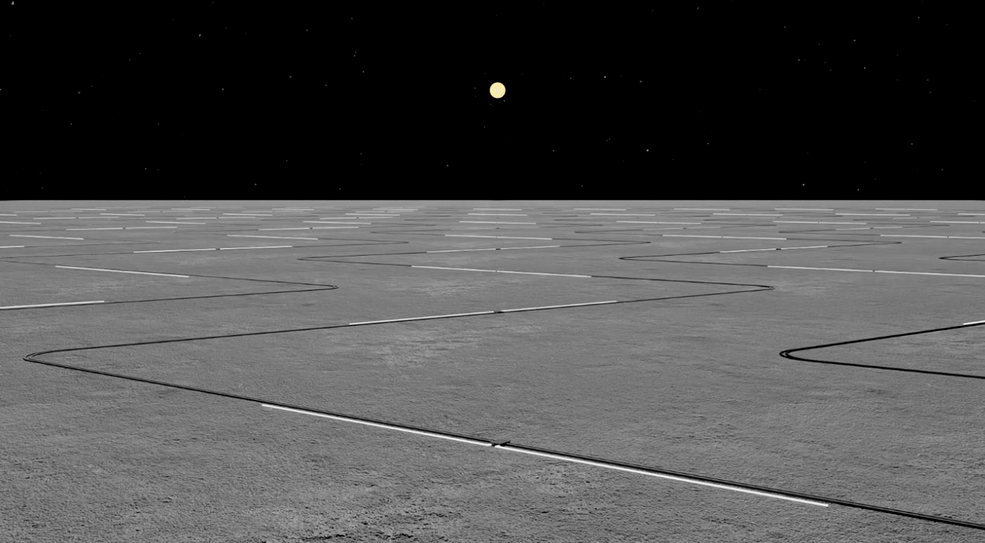FarView Observatory – A Large, In-Situ Manufactured, Lunar Far Side Radio Array
Ronald Polidan
Lunar Resources, Inc.
FarView is a low frequency (5-40 MHz) radio telescope array comprised of 100,000 dipole antennas, dispersed over ~ 200 km2. The observatory is manufactured in-situ, utilizing Lunar Resources’ developed technologies that first extract metals (along with oxygen) from lunar regolith then manufacture most of the required elements of the observatory: dipole antennas, solar cells, power lines, from those materials. FarView will be built on the lunar far side to shield it from the Earth’s ionospheric and anthropomorphic radio interference that compromise these observations from being made on Earth.
Significant advancements were made during the Phase I study. We adopted a subarray architecture rather than the single, fully connected array suggested in the Phase I proposal. The new subarray architecture made it relatively easy to identify potential build sites on the lunar far side. The region between 20 and 60 S latitude and 120 and 220 E longitude was found to be particularly rich in suitable sites. The science case for FarView was further developed with an emphasis on the unique capabilities to probe the unexplored Cosmic Dark Ages using interferometric radio observations. We were able to illustrate the potential for FarView to deliver a tomographic map tracing the evolution of the Universe from before the birth of the first stars to the beginning of reionization.
In the Phase I study, we developed: 1. An initial list of the hardware required to be deployed to build the observatory. 2. The initial physical parameters and requirements for the dipole antennas, power lines, solar arrays, and nighttime energy storage. 3. Developed an initial observatory architecture and several system implementation interdependency models to evaluate the architectures and perform trade studies. 4. Refined estimates for the quantity of lunar resources that would be needed to build FarView, including the amount of regolith that would need to be collected and the amount of aluminum and other materials that would need to be extracted from the regolith. 5. Established performance requirements for the rovers that will carry out the building of FarView, establishing that these physical and performance requirements are within the expectations for planned lunar surface rovers in the 2030 timeframe. 6. Identified lunar environmental survivability issues for all key observatory elements and began identifying mitigation options and trades. 7. defined the key studies that will need to be addressed in Phase II.
For our Phase II proposal we will advance the FarView Observatory concept through modeling and experimentation with a goal to resolve the major issues regarding both the science performance and the manufacture processes that will enable building FarView on the lunar far side. This Phase II study will perform advanced science configuration forecasting modeling and simulation that will set observatory architecture requirements and tolerances; demonstrate the fabrication of the aluminum thick-film strip line antenna directly on lunar regolith simulant in a vacuum chamber; and, finally, an implementation plan will be developed for building out the economic and supply chain models to obtain a high confidence cost and build time estimates. This study will also be supported by ongoing external technology development efforts for the extraction of elements from the lunar regolith, in-situ production of thin film silicon solar cells using extracted lunar silicon and aluminum, RF receiver technology, and lunar rover development.






























